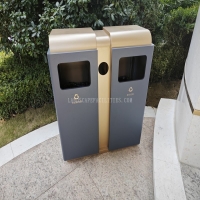Welcome to the website for landscape facilities products and knowledge.
How does the table’s design support the use of haptic feedback for interactive collaboration?
Modern interactive tables are revolutionizing collaborative workspaces through sophisticated haptic feedback systems. These specially designed surfaces incorporate advanced tactile technology that creates physical responses when users interact with digital content. The table's embedded sensors detect multiple touch points simultaneously, allowing several participants to work together while receiving distinct vibrational patterns that confirm their actions. This tactile communication layer enables teams to manipulate shared digital objects while maintaining natural physical awareness of their collaborators' movements.
The strategic placement of actuators beneath the table surface generates precise vibrations that correspond to specific interface elements. When a user moves a digital object or activates a control, subtle haptic responses provide confirmation without requiring visual attention. This design supports intuitive collaboration by allowing participants to focus on their discussion rather than constantly monitoring the interface. The haptic feedback creates an additional communication channel that enhances understanding between team members working on complex projects.
These tables employ force feedback mechanisms that can simulate resistance and texture, making digital objects feel more tangible during collaborative sessions. The responsive surface can generate different vibration patterns for various functions - a gentle pulse for selection, a stronger buzz for warnings, and rhythmic patterns for notifications. This sophisticated haptic language reduces cognitive load by providing physical cues that help users understand interface states without looking away from their collaborators.
The integration of haptic technology transforms ordinary table surfaces into dynamic collaboration tools. Participants can feel when others are interacting with shared elements, creating a more immersive and coordinated working experience. This tactile dimension supports nonverbal communication that is essential for effective teamwork, making complex collaborative tasks more intuitive and efficient. The physical feedback bridges the gap between digital and physical collaboration, creating workspace environments where technology enhances rather than interrupts human interaction.
Related search:

Recommendation
Double-bucket garbage bin, outdoor, metal, multi-color, powder-coated, double-bucket trash can